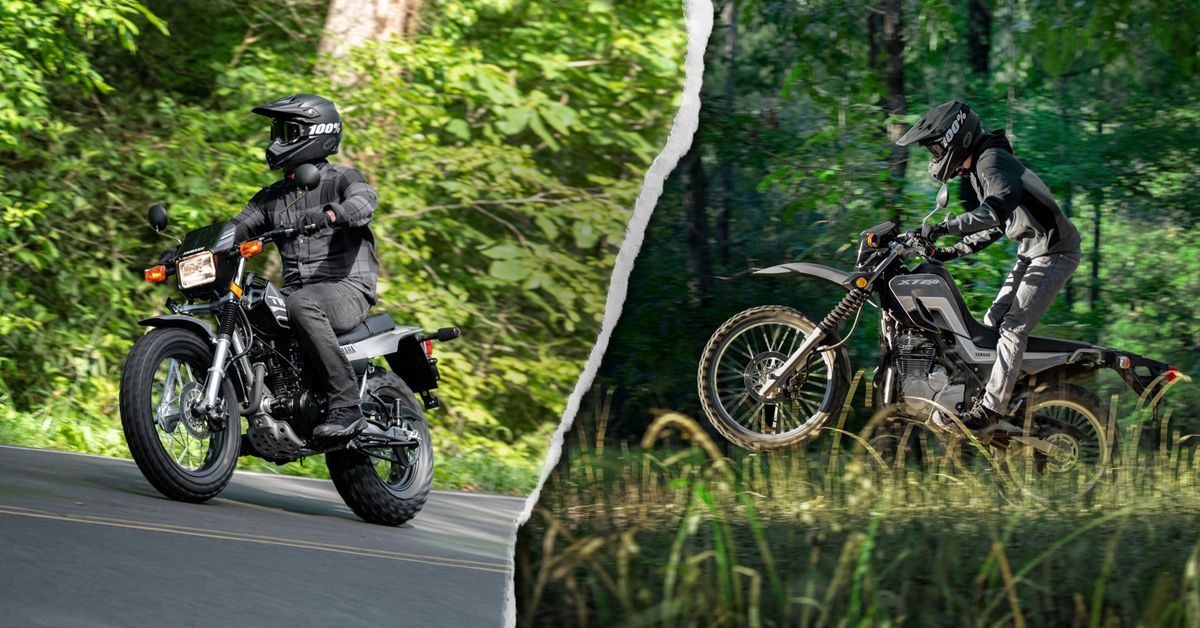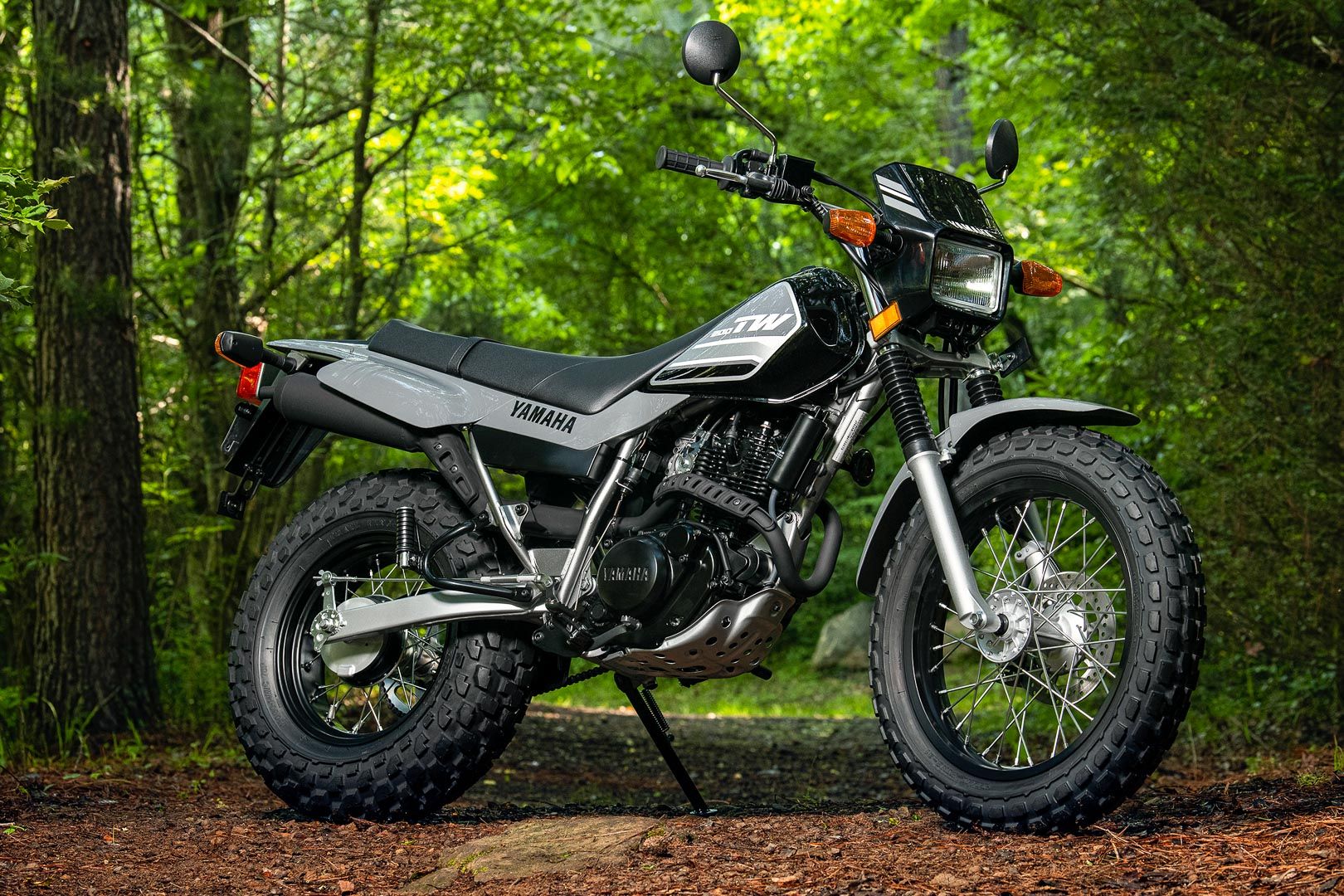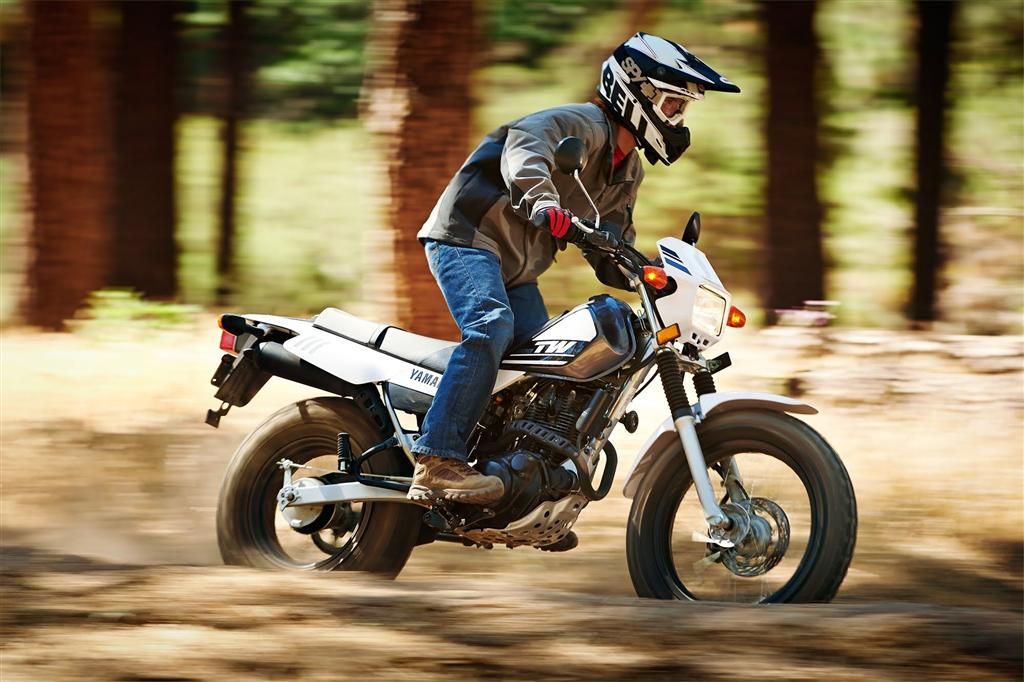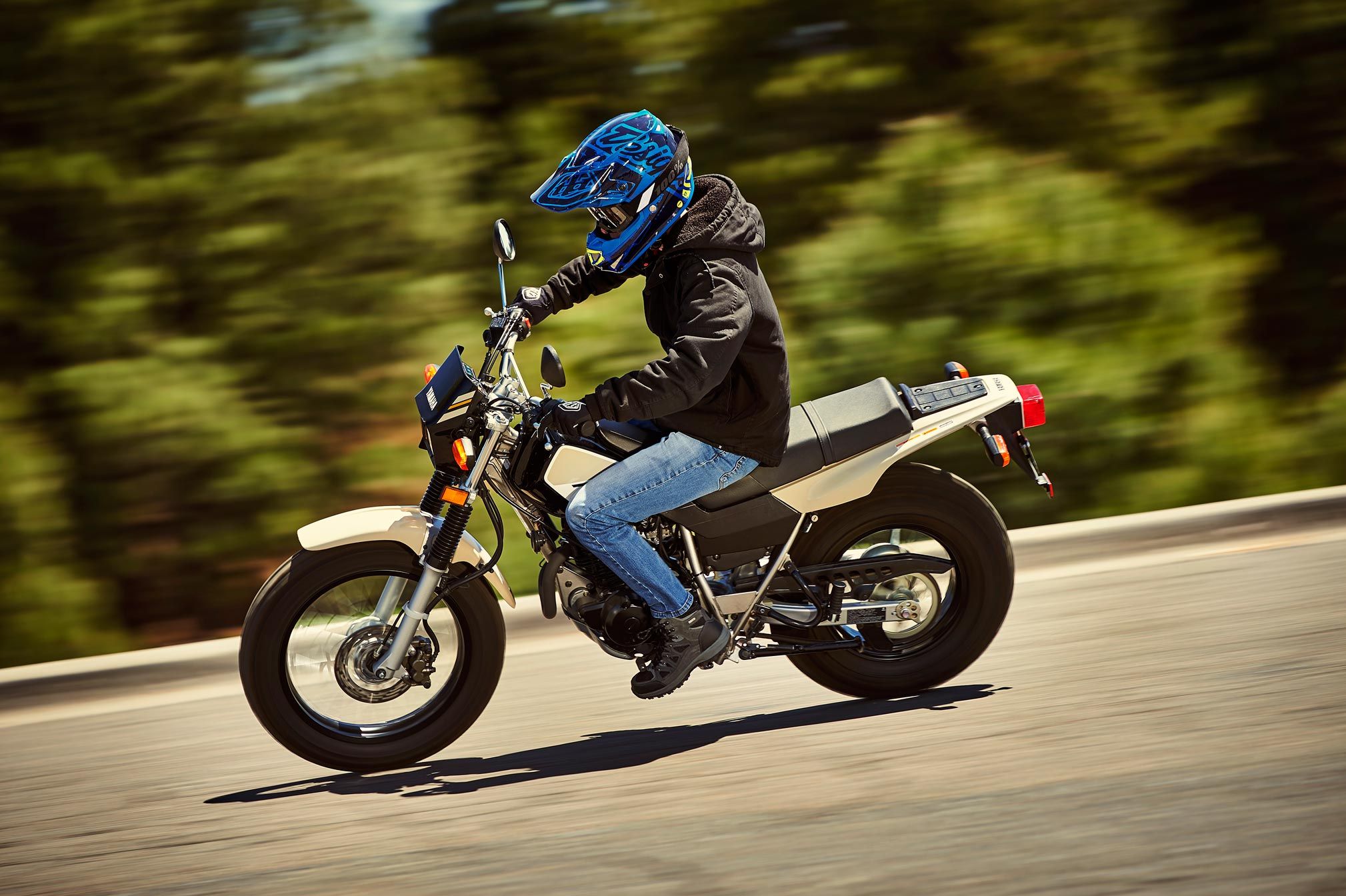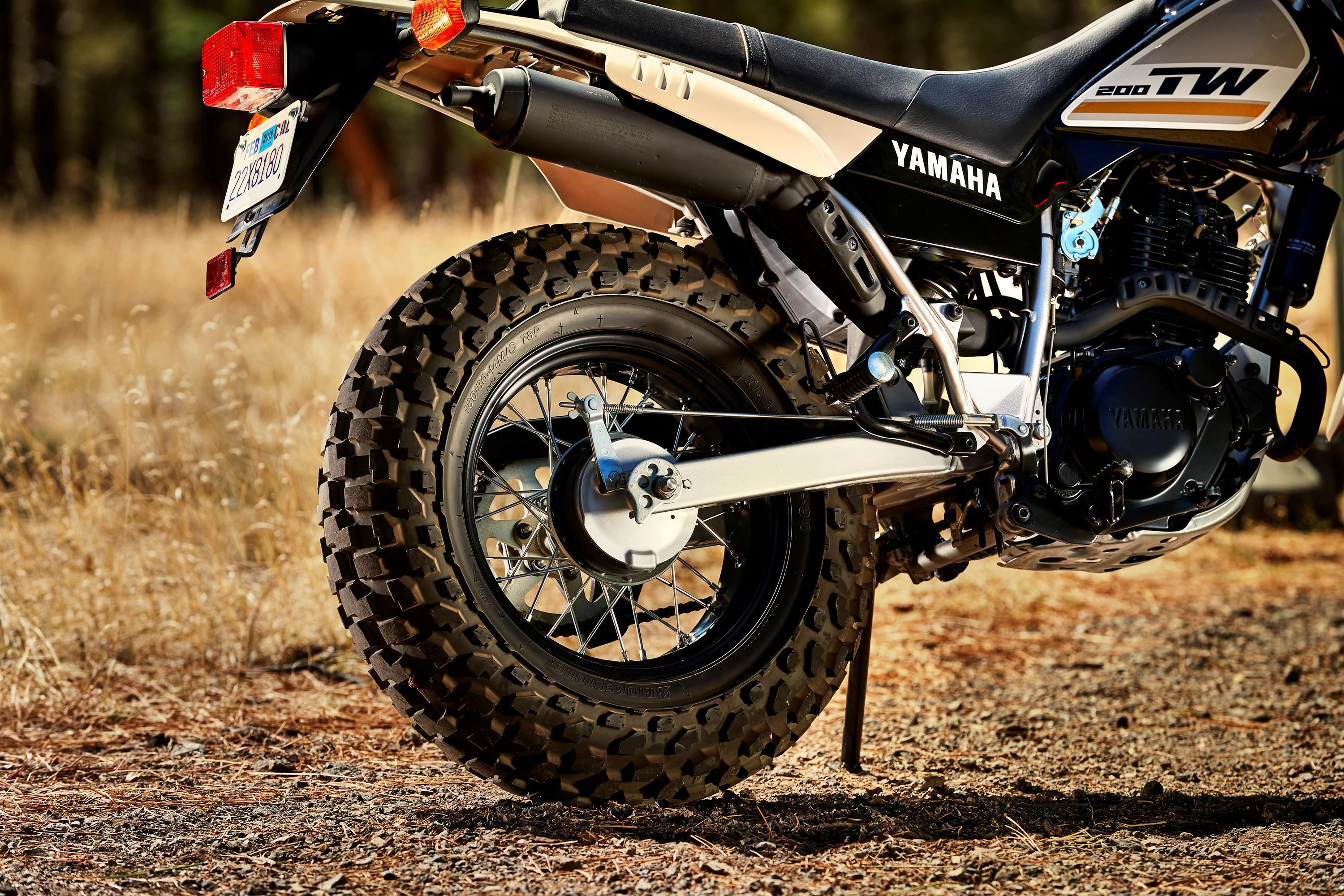Looking back on the last few years of popular culture can be tragic affair, but sifting through the overwhelming nonsense you'll find glimpses of memories of some of the more hilarious and unusual trends in personal transportation. Things like the two-wheeled "hoverboards," made infamous by the scourge of head injuries they gave to social media users, or Onewheels, or those mountain bikes with big balloon tires for mud and snow that you'll see people riding most often on paved trails.
"Fat bikes," as they're so bluntly named, look a little ridiculous, and having big tires with soft sidewalls must be torturous for your legs on a longer ride. Their capacity to plod through difficult terrain with better stability and grip must be the big draw, even if so many seem to get underused.
Like many trends in two-wheeled transportation, there is a reflection in fuel-powered motorcycles of what exists in human-powered bikes. The fat bike idea has long existed in off-road motorcycling, particularly in climates where skinny wheels would cut through loose surfaces and lose traction, like sand or muddy farm properties. Putting an ATV-sized tire on an off-road bike is a concept better suited to a platform where internal combustion handles the tiresome business of sending torque to an oversized rear wheel and pushing a fat front wheel through dirt.
The recipe was first introduced sometime during the 1970s and 1980s motocross boom, when Japanese bikes exploded in popularity across North America. Yamaha, which at the time had become one of the more prominent players in the off-road and dual-sport bike market, would bring forth a fat-bike design so good and so effective that it has been in production with a few minor upgrades for 34 years and counting.
The Yamaha TW200, introduced in 1987, was (and still is) an effective recipe: low, stable frame, simple controls, easy-maintenance small single-cylinder engine, and really big tires. It worked then, it still works now, and the TW200 package delivers a capable dual-sport bike with a compact and easy-riding design that even beginner riders can operate in difficult conditions with confidence. Read on to find out why it's so good.
It’s A Simple Bike, Even Today
The Yamaha TW200 is not a fast bike. Neither is it a big bike. It’s not a particularly sprightly bike either; new models in 2021 still use a rear drum brake and a carburetor. The engine is a 196 cc single-cam single-cylinder tuned for low-end torque, and its five-speed transmission is geared for lower-speed trail riding.
Highway speeds are possible, but the TW will get there with the reluctance of a toddler told to finish a cold plate of Brussels sprouts if he wants dessert. It is not a fast machine, and anything over 110 km/h (65-70 mph) is uncomfortable. Its name stands for Trailway, which should be enough indication that it is not a particularly road-minded bike, but it’s as street-legal as any other dual-sport and still plenty usable at lower road speeds.
We'll get into riding characteristics later on, having had first-hand experience on a TW200 as an introduction to motorcycling for this author. Simplicity is this bike's strongest suit, in all aspects. As mentioned in the intro, this bike is very easy to maintain. The chain is easy to lubricate, engine parts are easily accessible for repair or replacement and parts are generally quite cheap.
There are some accessories and modifications that can be done to TWs. You can find saddlebags, windshields, grip guards, upgraded skid plates and some performance parts like exhausts, but don't expect to squeeze much extra power from its 196cc air-cooled four-stroke engine.
It Can Cross Terrain Like An Expensive ADV Bike
The bike’s oversized tires grip terrain and propel you forward like a mountain climber’s crampons, which might just be the TW’s signature piece. It certainly is the bike’s most identifiable characteristic, but the benefits far outweigh whatever you may see as a styling deficit.
There is, however, a performance deficit: the big tires slow the bike down on the pavement, like trying to run a 400m race in snowboard boots. Its five-speed gearbox has a very short first and second gear, and even third can still keep the engine happily turning over in its mid-range at trail speeds. Though the tire package seems overkill for the street, their round profile keeps the bike from feeling cumbersome and instead gives it stability in corners that conventional dual-sports with skinny tires would lack.
But get the Trailway to its happy place and the bike's virtues quickly make themselves known to you. It plows through terrain with ease and enthusiasm. Dirt, grass, mud, hopping over ruts, clearing fallen trees, crossing streams, pushing through brush and overgrowth, and, really, any other off-road scenario is where this motorcycle shines.
The bike has relatively low suspension travel, which can make it feel bouncy at times, but the massive tire sidewalls compensate by absorbing a lot of the initial impact. This is a comfortable motorcycle, on any terrain. You'll almost wish it had a bigger fuel tank so you could ride for longer – fat tires aren't best suited for fuel economy, but the bike's tiny engine still burns gasoline quite efficiently.
It’s Perfect For Beginner Riders
As mentioned at the top, the Yamaha TW200 was an introductory motorcycle riding experience for this author a few years ago, thus we have the first-hand experience of this platform from the perspective of a total beginner. Though just getting on a bike for the first time was daunting enough, the riding position felt immediately comfortable and easy, and the low center of gravity becomes apparent as soon as you get it upright.
Dual-sports are generally safe bikes for inexperienced riders, particularly ones with a low center of gravity. Being short and squat to the ground gives you confidence that you probably won't fall, at least not as long as you keep your wits. The TW carries its weight so low that it never feels particularly prone to tipping over, at least as much as a motorcycle can keep itself upright.
Its low seating position and center of gravity have the net benefit of an extremely confidence-inspiring ride. Even shorter riders can easily touch ground with their boots, meaning you go into a ride knowing that if your inexperience gets you too far into the weeds or you hit a rough section too fast, you can easily slow down, regain control and stabilize yourself.
Key on, shifter in neutral (indicated by a handy gauge cluster light) thumb the starter and the engine thrums into life. The clutch is buttery smooth, and throttle response from the twist-grip isn't spiky, making moving from a dead stop incredibly easy even for your first time operating a clutch lever with your left hand.
The front disc brake is more effective and responsive than the rear drum, but at no time does either feel inadequate. Even while dodging ruts in the tracks and particularly muddy puddles, you never worry that you won’t be able to stop the bike in time.
In his review of a 2020 TW200 for Ultimate Motorcycling, Don Williams describes the bike as the "perfect beginner motorcycle for someone who requires a street-legal machine. Virtually every aspect of the 200’s design focuses on ease of use." Whether you intend to push its capacities off-road or not, it's one of a handful of brilliant small-displacement beginner bikes you can buy.
Having done it ourselves, it can be said with confidence that this bike can cure a rider's fear of motorcycles and particularly off-road riding. In our experience, it was completely non-intimidating, and a beginner can, with very little instruction, learn the intricacies of operating a motorbike without fear of serious injury.
Perhaps more important is the world of possibility to which a bike like this opens you up. Riding this silly little iron donkey was motoring in a pure form, exploration, and liberation sung to the tune of gasoline burning and a tiny piston thumping away. Should that not be the marker of a great trail bike?

